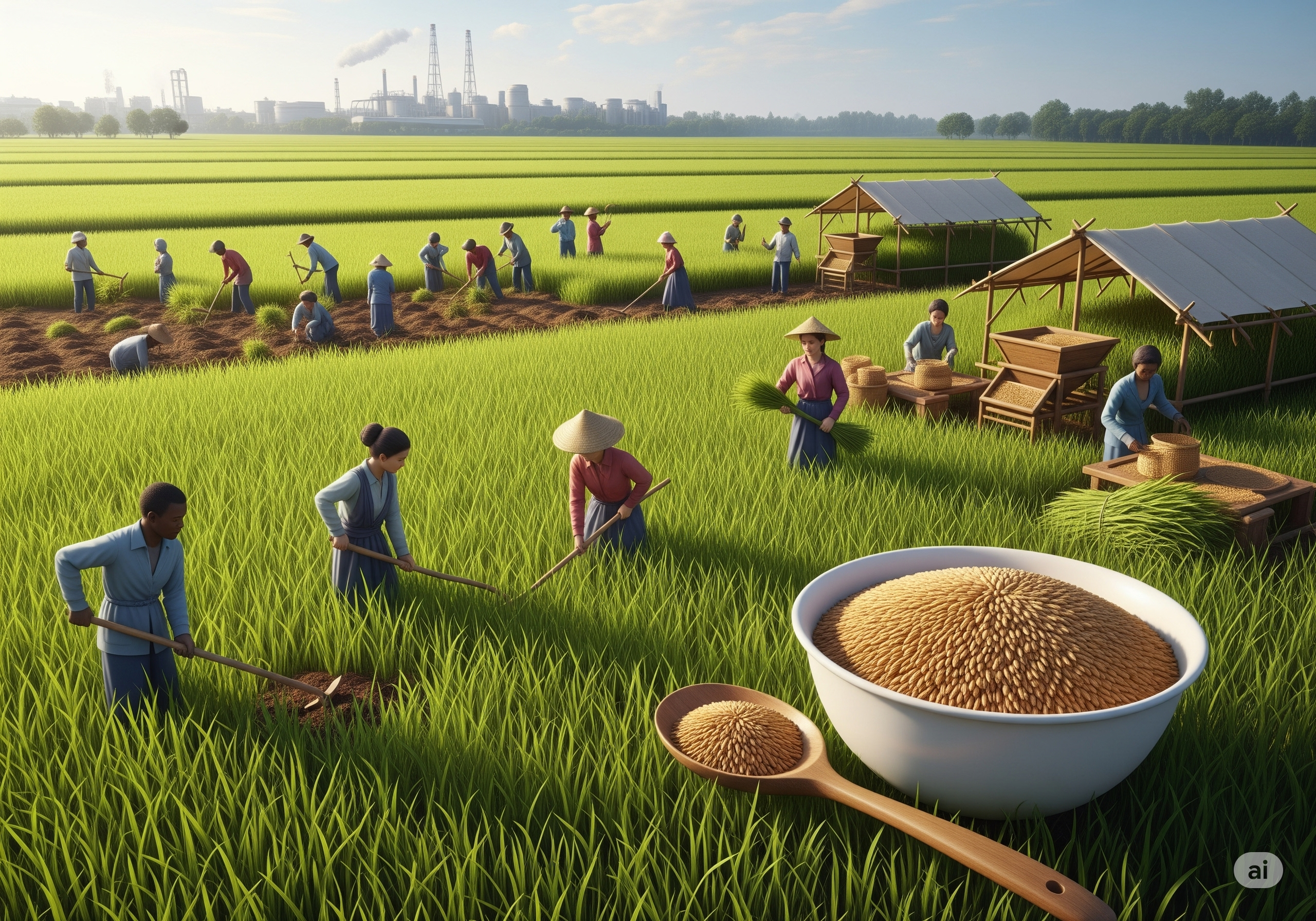

The Resilient Grain: Unveiling the Science and Significance of Parboiled Rice
In the vast and varied world of rice, a unique category stands out for its distinctive processing and enhanced nutritional profile: parboiled rice. Unlike white rice, which is milled directly after harvesting, or brown rice, which retains its bran layer, parboiled rice undergoes a partial boiling process while still in its husk. This ancient technique, refined over centuries, transforms the grain, making it more robust, nutritionally superior, and a resilient staple for millions worldwide. From its historical origins to its modern-day global importance, parboiled rice offers a fascinating blend of tradition, science, and a compelling case for its increasing role in food security.
The practice of parboiling rice dates back thousands of years, with evidence suggesting its existence in ancient India and parts of Africa. Early methods involved simply soaking paddy in water, heating it, drying it, and then milling it. This rudimentary process was discovered to make the husking easier, reduce grain breakage, and, perhaps inadvertently, improve the nutritional value of the final rice. The term "parboiled" itself derives from "partial boiling," which accurately describes the process rather than implying full cooking. Over time, these traditional methods evolved into the sophisticated, large-scale industrial processes employed today, utilizing modern machinery to control temperature, pressure, and duration with precision.
The parboiling process typically involves three main steps:
Soaking (Hydrothermal Treatment): Paddy (rice in its husk) is soaked in warm water. This allows moisture to penetrate the kernel, hydrating the starch granules.
Steaming: The soaked paddy is then steamed under pressure. This crucial step gelatinizes the starch within the kernel and drives water-soluble nutrients, particularly B vitamins (thiamine, niacin, riboflavin, pantothenic acid), from the bran and hull into the endosperm. It also hardens the kernel.
Drying: After steaming, the paddy is carefully dried to reduce its moisture content to optimal levels for milling and storage. This step prevents spoilage and prepares the grain for subsequent processing.
Once dried, the parboiled paddy is milled to remove the husk and bran, similar to the process for white rice. However, because the nutrients have been "locked in" to the endosperm, the resulting parboiled rice, though appearing white, retains significantly more vitamins and minerals than conventionally milled white rice.
From a nutritional standpoint, the advantages of parboiled rice are substantial. The most significant benefit is the retention of nutrients. Studies show that parboiled rice retains up to 80% of the B vitamins present in the whole grain, whereas regular white rice may lose a substantial amount during milling. It also typically has more fiber, calcium, potassium, and magnesium compared to non-parboiled white rice. This enhanced nutritional profile makes it a more wholesome option, especially in diets where rice is a primary caloric source.
Furthermore, parboiled rice often has a lower glycemic index (GI) compared to regular white rice. The gelatinization and retrogradation of starch during the parboiling process alter the starch structure, making it digest more slowly. This leads to a more gradual rise in blood sugar levels, which can be beneficial for individuals managing diabetes and for promoting sustained energy.
Beyond nutrition, the parboiling process imparts several desirable physical qualities to the rice. Parboiled rice grains are typically firmer and less sticky when cooked, making them ideal for dishes where separate, fluffy grains are preferred, such as biryanis, pilafs, and certain curries. The hardening of the kernel during steaming also significantly reduces breakage during milling, leading to a higher yield of whole grains and less waste. This robustness also translates to a longer shelf life and better resistance to pests. The characteristic yellowish or amber hue of parboiled rice lightens upon cooking, becoming whiter and fluffier.
Globally, parboiled rice holds immense culinary and economic significance. It is a staple in many parts of the world, particularly in India (especially the southern and eastern states), Bangladesh, Pakistan, West Africa, and parts of the Middle East. In these regions, its unique texture and ability to absorb flavors make it a preferred choice for a wide array of traditional dishes. India is one of the largest producers and exporters of parboiled rice, with varieties like IR64 parboiled rice being highly sought after in international markets.
The economic importance of parboiled rice cannot be overstated. Its processing leads to less grain breakage, meaning more sellable product from the same amount of paddy, which benefits both millers and farmers. The increased demand for nutritious and convenient food options has driven its popularity in global trade. Major importing countries in the Middle East, Africa, and parts of Asia rely heavily on parboiled rice due to its superior storage properties, reduced susceptibility to spoilage in humid climates, and nutritional benefits. This consistent demand contributes significantly to the agricultural economies of exporting nations and plays a crucial role in international food security.
Despite its many advantages, challenges in the parboiled rice sector do exist. The initial investment in parboiling machinery can be substantial for smaller mills. Proper drying is critical to prevent off-flavors or spoilage, requiring careful moisture control. However, ongoing research and technological advancements continue to refine processing methods, making them more energy-efficient and scalable.
The future of parboiled rice appears bright. As global populations grow and awareness of nutrition increases, the demand for healthier and more resilient food options will only intensify. Its inherent advantages in terms of nutrient retention, cooking quality, and reduced post-harvest losses position it as a key component in addressing future food challenges. Innovations in parboiling techniques, combined with its strong market acceptance, ensure that this resilient grain will continue to nourish communities and underpin agricultural economies worldwide for generations to come. In essence, parboiled rice is not just a processed grain; it is a testament to human ingenuity in enhancing a fundamental food source for the benefit of all.